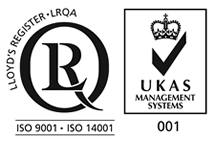
Main Products
Copyright 1998-2025 Firmetal Group All Rights Reserved. | Sitemap
A superfine crystal Ta material; In the ultrafine tantalum material, | longitudinal elongation - lateral elongation |/ longitudinal elongation * 100% is less than or equal to 3%, and | longitudinal elongation - lateral elongation |/ lateral elongation * 100% is less than or equal to 3%. In the ultrafine Ta material, the mass percentage content of Ta is greater than or equal to 99.995%. The following steps are included: the tantalum billet is melted by electron beam under the condition of high vacuum degree greater than or equal to 10-3Pa, and the ingots are coated in a protective atmosphere after casting; The three-dimensional hot forging is carried out, the total deformation of the blank is 65-75%, the blank temperature is 1150-1250℃; After the billet is opened, the jacket is removed and rolled. Ultrafine crystal Ta material was obtained.
The purity and density of Ta billets are improved by high vacuum melting of billets, and the grain structure is refined and homogenized by three-dimensional hot forging of the billets with high purity iron envelope and large deformation in the argon chamber. The microstructure is further refined and homogenized by cross rolling at ultra-low temperature and high temperature with large deformation, and the ultra-fine crystal and ultra-low anisotropy Ta materials are finally prepared. The tantalum material of the invention has a fine and uniform structure, and finally realizes the goal of high plasticity and low anisotropy of Ta material.
The invention has the advantages that by adopting vacuum arc melting, gas and low melting impurities can be fully eliminated and the billet structure purified because the melting temperature is above 1300℃. The high purity iron is coated in a protective atmosphere (including argon gas chamber) to prevent the tantalum from being oxidized during the coating process. During processing, the coating also plays a solid lubrication role to prevent deformation and cracking. The structure distribution of billet is uniform by forging with three dimensional large deformation. Tantalum is a body centered cubic metal, but its plastic-brittle transition temperature is lower than that of liquid nitrogen. Therefore, tantalum can be deformed at the ultra-low temperature of liquid nitrogen, and its plastic deformation at ultra-low temperature can restrain dislocation slip. The deformation mechanism is mainly shear deformation, and shear deformation is the basis for achieving ultra-fine crystals.